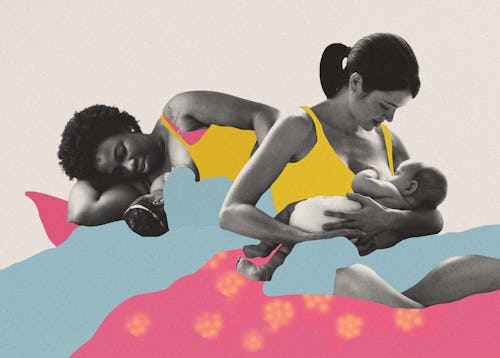
The first time you feed your baby may not feel as second-nature as you expected. Or maybe some nice parents already told you that it’s normal to struggle with breastfeeding at first. After all, you and your baby are doing this for the first time, ever. Even if they’re not your first child, it’s your first time breastfeeding them, and babies have this annoying way of being their own person right from the start, complete with preferences and personalities. So yeah, whether this is your very first time breastfeeding, or your fifth, it may be helpful to have a confident grasp of more than one go-to breastfeeding position so you can mix it up as-needed. Many parents end up settling on a favorite hold or position that seems to work best for both your comfort and your baby’s, while others prefer to mix it up throughout the day, depending on where they are and what they’re doing (not to mention how exhausted they are). Whether you’re trying to find a position that relieves gas or reflux, or just something that makes it easier for your baby to get a good latch, here are the five most common breastfeeding positions.
Tips for getting comfortable in any breastfeeding position
Board-certified lactation consultant Tiara Caldwell explains that whichever breastfeeding positions you want to try, there are three key things that will help you get comfortable and help your baby get a good latch:
- Bring baby as close to your body as possible. “That might mean that you need additional pillows to bring the baby up, height-wise, or you may need another hand,” Caldwell explains. “If there's too much distance between you and your baby, that could increase the baby not being able to get enough breast tissue in their mouth, which means sore nipples.”
- Be sure that you’re belly-to-belly with your baby. “Often, when someone hands you your baby, you’ll find yourself hold the baby with their belly facing up towards the ceiling,” Caldwell says, explaining that trying to breastfeed with Baby in that position is a common mistake that new parents make.
- Consider a position that allows you to clearly see how your baby is coming to the breast. Particularly if you’re having trouble getting a comfortable latch, Caldwell recommends that new parents consider positions — like the football hold — that allow you to see Baby’s mouth as it latches from a new angle.
Cradle Hold
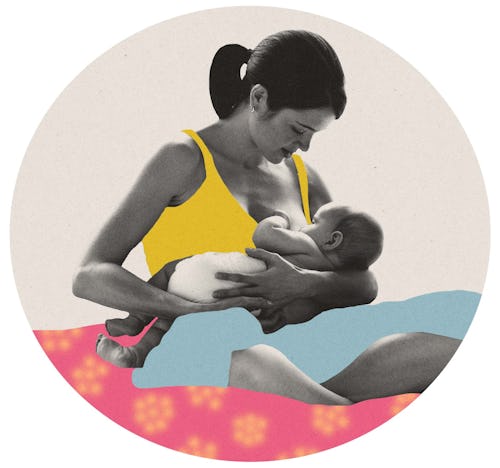
Arguably the most classic of breastfeeding positions, the cradle hold is likely what you picture first when you imagine a person breastfeeding their baby. “The cradle hold, I think, is the most popular position,” Caldwell agrees. To try the cradle hold, begin by bringing your baby close to your belly so that their body is facing yours.
The cradle hold is quite simple — “just baby belly-to-belly with you with the arm supporting their weight,” Caldwell says. This means that if you’re going to feed Baby from your right breast, hold them with your right arm and let their head rest and body, supported by your arm. In the cradle hold, your other hand should be free to help guide your breast to your baby’s mouth. Remember that, although it’s likely to be the first one you try, that doesn’t mean it will be the right fit for you. If you’re struggling to get comfortable or are dealing with a shallow latch, consider trying one of the lesser-known positions.
Cross-Cradle
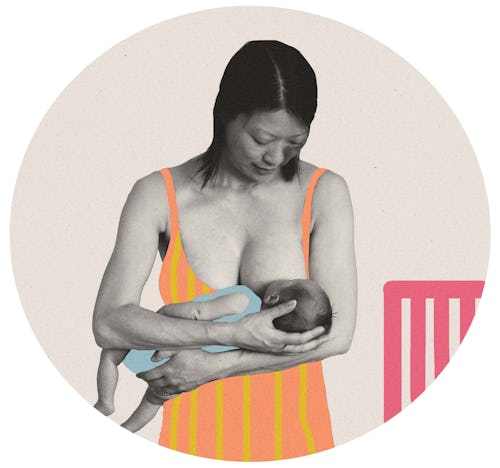
Similar to the Cradle Hold, Cross-Cradle is a bit more supported, and in fact, is particularly recommended for babies, like preemies, who may need a bit more support as they nurse. In Cross-Cradle, if you’re bringing your baby to nurse on your right side, you’ll hold them across your body — belly-to-belly — with your left arm, supporting their head with your left hand. Your right arm may be underneath Baby, as well, offering additional support.
Football Hold
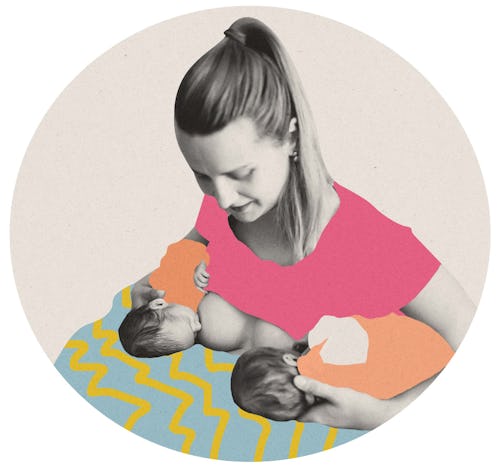
As with all of these positions, they’re easiest to try for the first time with a little guidance. If you give birth in a hospital, you may want to consider asking if there is a lactation consultant available to show you how to get into a comfortable position and to check your baby’s latch. Football hold may seem a bit tricky at first, but it can be a great one for really seeing how your baby comes to the breast to feed and making adjustments as-needed, Caldwell says. Football Hold may also be a particularly good breastfeeding position if you’ve had a C-section, because the baby will not be pressed against your incision site, but rather cuddled up to the side of your body.
To nurse your baby in the Football Hold, begin by making sure nothing is behind you, because you’ll need a little room for your baby’s legs to run along your side body. “Baby is still belly to belly with you, but a little more off to the side,” Caldwell clarifies. Your baby can still be cradled in your arm — in your right arm if you’re nursing on the right side, and vice versa — but their bodies will be turned in the opposite direction (legs pointing behind you) from that of the Cradle Hold. “I'm still holding baby the same way by supporting the neck with my hand, and you should still have a free hand to be able to guide your breasts,” Caldwell says.
Side-Lying
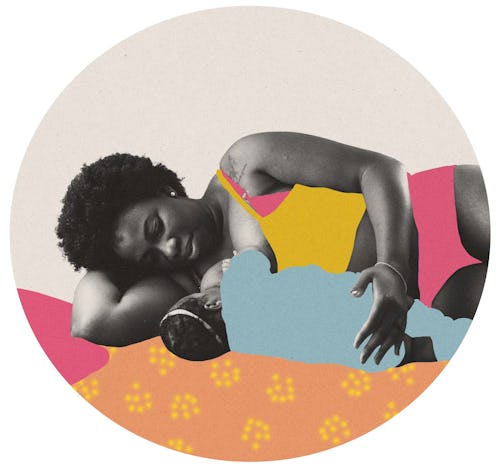
One position Caldwell loves to recommend for older babies is the Side-Lying breastfeeding position. Breastfeeding parents will love it because yes, you get to lay down to do it, and babies often enjoy it as a cuddly way to nurse, particularly at a sleepy time of day. “You will be laying on one of your sides, and you want baby to be, again, close to you. You may need a pillow or a cushion or a partner just to keep baby from rolling,” Caldwell suggests. As with any position, Caldwell recommends you bring Baby to your breast at a bit of an angle so that you’re able to see and they're able to get a deep latch.
Laid-Back Position

If you’re on the hunt for breastfeeding positions that reduce gas and help with any reflux issues your baby may be having, look no further than the Laid-Back breastfeeding position. Because baby stays very upright, it might be a little more comfortable for babies struggling with a gassy belly. Plus, Caldwell says, it’s actually very easy. Especially if you have a newborn, it may help to latch the baby first in the Cradle Hold, and then recline back, she suggests, at least when you’re trying it for the first time. “When they hand you your baby for skin-to-skin after birth, baby will start looking for the breast. If you just recline back in the bed, the baby will find their way to the breast. You really don't need a whole lot of support to keep them there, because gravity will help them stay on top of the breast.”
The Laid-Back position may be a perfect fit if you have a fast letdown or bigger breasts and struggles associated with either of those issues, she adds. “For parents who have bigger breasts in the Laid-Back position, they’re not having to deal with the weight, all the time, of trying to hold up the breast. They just need an arm to be able to support the baby.”
Koala Hold

Parents of older babies and toddlers should know about the Koala Hold, Caldwell says. It’s a popular breastfeeding position for older babies, and one that she herself favored when nursing her toddler. “In the Koala Hold the baby would be sitting up in your lap,” she says simply. Belly-to-belly, your baby or toddler would be facing you, with their legs over yours and their arms around you in sort of a hug, much like the way a baby koala would cling to its mother.
When in doubt, seek some advice
Lactation consultants or even your child’s pediatrician may be a wonderful resources if you’re struggling to find a comfortable position or you’re worried that your baby isn’t getting enough milk during feedings. There are many ways to make breastfeeding work for you, if that’s something that you want to do.
Expert:
Tiara Caldwell, IBCLC, owner of Crowned & Cradled
0 comments:
Post a Comment